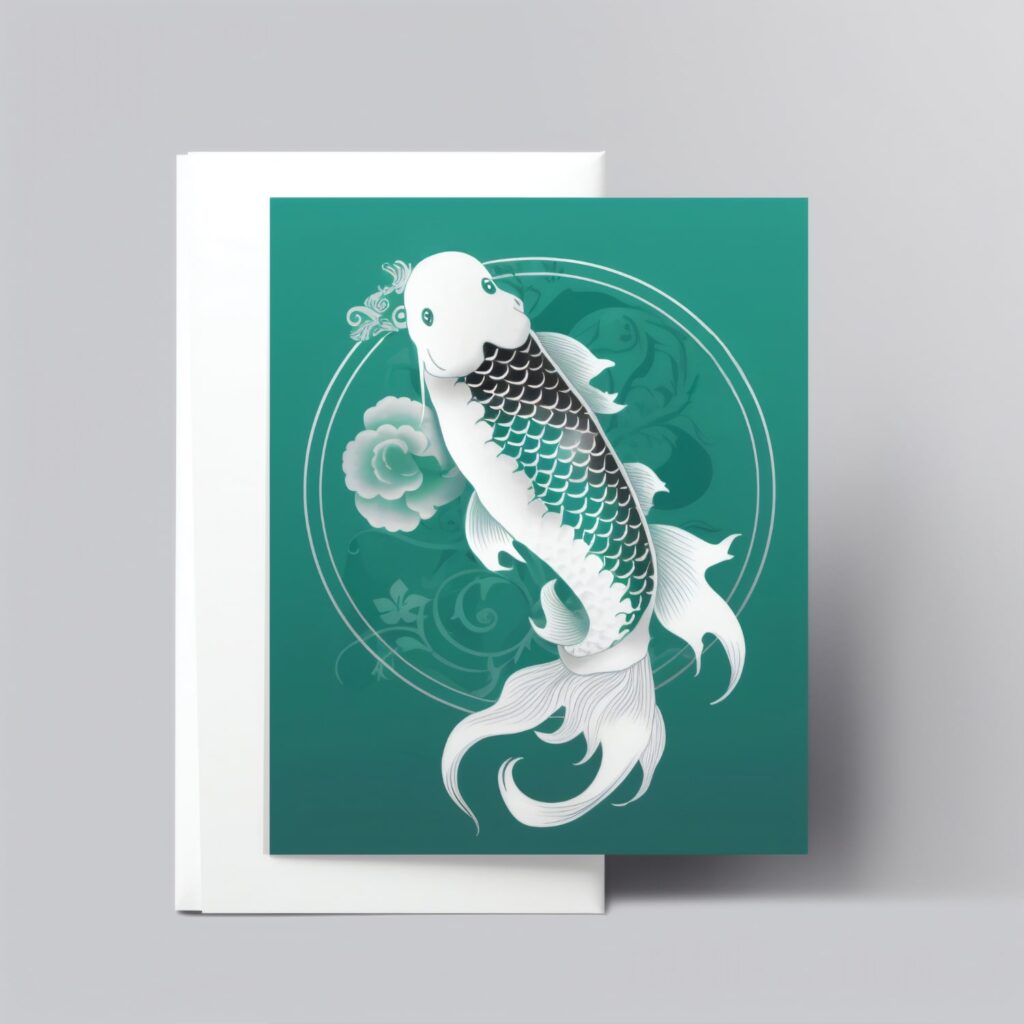Introduction
Koi fish, with their vibrant colors and graceful movements, have long been a favorite subject for artists worldwide. In this blog post, we’ll explore the techniques and methods for painting and illustrating koi fish, from capturing their fluid motion to bringing out their vivid hues and intricate patterns.

Understanding Koi Fish Anatomy
Before putting brush to canvas, it’s essential to understand the anatomy of koi fish. In addition, study the proportions, shapes, and features of koi fish, including their elongated bodies, flowing fins, and distinctive patterns. This understanding will inform your artwork and help you create realistic and visually appealing representations of koi fish.
Choosing the Right Materials
Selecting the appropriate materials is crucial for successful koi fish painting and illustration. In addition, opt for high-quality paints or colored pencils in vibrant hues to capture the rich colors of koi fish accurately. Consider using watercolor or acrylic paints for their fluidity and versatility, allowing you to achieve the translucent effects and dynamic brushstrokes characteristic of koi fish.
Capturing Movement and Flow
Koi fish are known for their graceful movements and fluidity, which should be reflected in your artwork. In addition, experiment with brushstrokes, layering, and blending techniques to capture the dynamic motion and flow of koi fish swimming through water. Pay attention to the direction of their movement and the ripples they create, adding depth and dimension to your artwork.
Enhancing Color and Contrast
One of the most striking features of koi fish is their vibrant colors and intricate patterns. In addition, use bold and saturated colors to bring out the brilliance of their scales and fins, paying attention to light and shadow to create contrast and depth. Experiment with layering and glazing techniques to achieve luminous effects and subtle gradations of color.
Adding Detail and Texture
To create realistic and lifelike representations of koi fish, focus on adding detail and texture to your artwork. In addition, use fine brushes or pencils to depict the intricate patterns and markings of koi fish, paying attention to the delicate scales and subtle variations in color. Add highlights and reflections to create depth and dimension, bringing your koi fish to life on the page or canvas.
Exploring Different Styles and Approaches
Don’t be afraid to experiment with different styles and approaches to koi fish painting and illustration. Whether you prefer realism, impressionism, or abstraction, there are countless ways to interpret and capture the beauty of koi fish. In addition, explore different techniques, mediums, and artistic styles to find what resonates with you and allows you to express your unique vision of koi fish.
Practicing Patience and Persistence
Mastering the art of painting and illustrating koi fish requires patience, practice, and persistence. In addition, take your time to study and observe koi fish in their natural habitat, and don’t be discouraged by initial setbacks or challenges. With dedication and perseverance, you can develop your skills and create stunning artworks that celebrate the timeless beauty and elegance of koi fish.
Conclusion
In conclusion, painting and illustrating koi fish is a rewarding and fulfilling artistic endeavor that allows you to capture the beauty, grace, and serenity of these magnificent creatures. By understanding koi fish anatomy, choosing the right materials, capturing movement and flow, enhancing color and contrast, adding detail and texture, exploring different styles and approaches, and practicing patience and persistence, you can master the art of koi fish painting and illustration and create captivating artworks that inspire and delight. So pick up your brushes and pencils, immerse yourself in the world of koi fish, and let your creativity soar!
Last modified: 3 April, 2024

